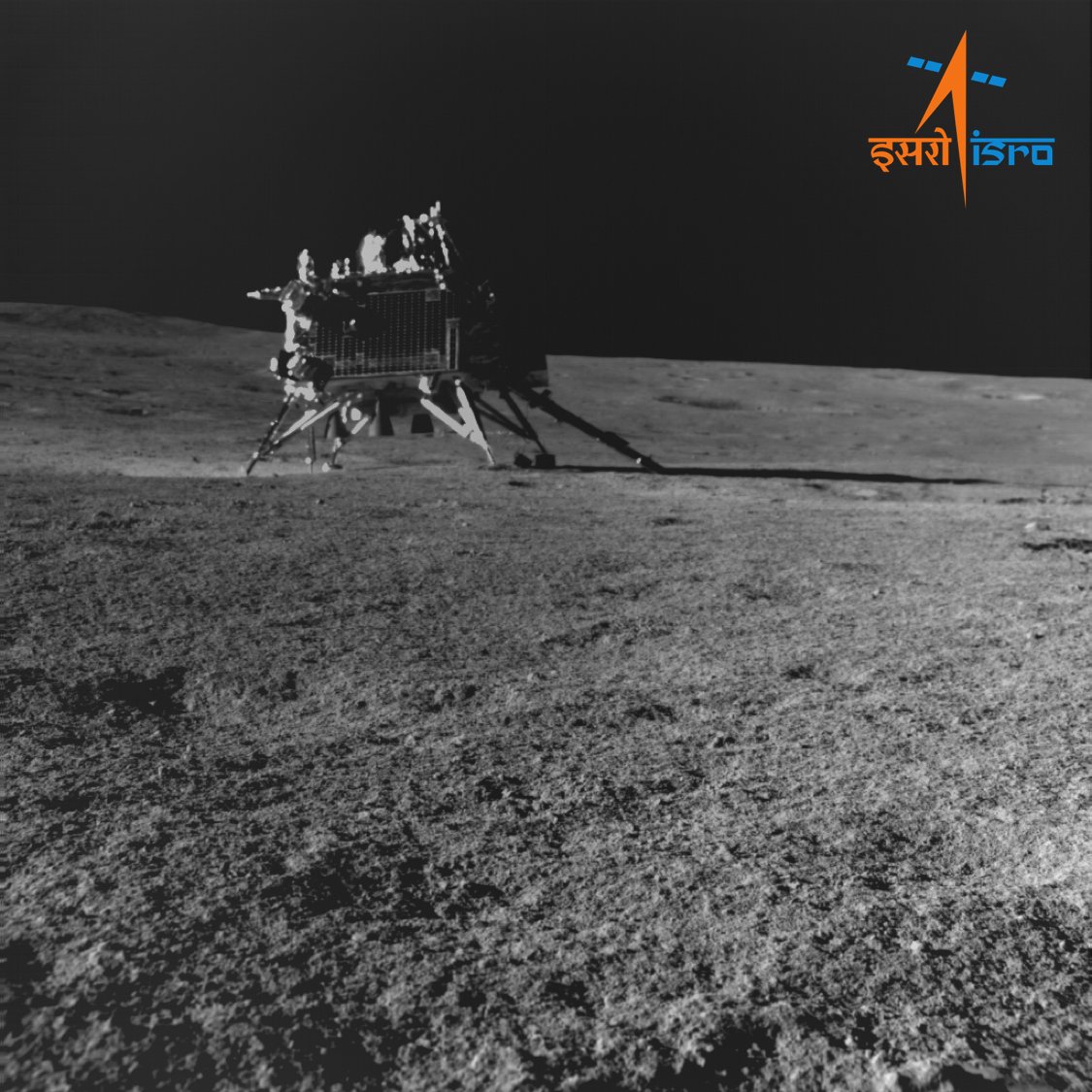The lunar day is coming to an end over the area where Chandrayaan-3 landed. Almost two weeks of measurements, firsts for space India and promises for the future. The hardware behaved as expected, and the teams even allowed themselves a small daring novelty, a jump before putting to sleep.
The sun, India’s next objective, will rise over the area in 16 days.
It’s time for a big sleep
Since September 4, the Vikram lander and the small Pragyan rover have been put to sleep by teams from the ISRO control center, the Indian space agency. The latter have taken the lead in downloading as much data as possible, and taking a safety margin so that the instruments or other vehicle components do not break down due to lack of available energy.
Indeed, the Chandrayaan-3 mission, which landed on lunar soil on August 23, could not last more than two weeks. Both vehicles are powered by batteries recharged by solar panels, and the sun is gradually setting over the area near the lunar south pole. Unlike other missions, such as Chang’E 3 or 4 (China), India did not equip Chandrayaan-3 with radioactive heat generators. Vikram and Pragyan will drain their batteries, cool down and switch off permanently.
All is well who…
Definitely, really? ISRO will try all the same, by the end of the month, to regain contact with its lunar vehicles, but the hope is weak, and they were not designed for that. Still, Chandrayaan-3 has so far exceeded all the hopes of its designers. It first landed safely on an open site (baptized Shiva Shakti), but also successfully executed the rest of its mission.
Instrument deployment and measurements were recorded and transmitted, the rover’s ramp lowered, and the rover was allowed to roll. The teams calculated that, all in, Prayan (26 kilos) covered around 101 metres. It is a little less than what had been imagined when it was designed, and the scientists hoped for 300 meters, but it nevertheless took photos, analyzed the ground, allowed the algorithms of its trajectory to be validated, etc.
One last jump before turning it off
A few handfuls of hours before gradually shutting down the lander, the Indian teams wanted to take advantage of the fuel that remained in the tanks and which had not been used on August 23. They programmed an extremely rare maneuver (only an American Surveyor mission had executed it until then) and asked the lander to make a small “jump”. The vehicle of more than 600 kilos reignited its thrusters to rise from the ground before landing again, 40 centimeters further.
Technically, it may seem shy… but it’s not as simple as it seems! It is already necessary that the thrusters respond present after 2 weeks of inactivity, but also that the control is impeccable so as not to tip over to the side. The images and sensor measurements after this small displacement were among the last to be transferred to Earth before the mothballing.
Program officials have already announced that their lunar program will be continued with even more ambitious missions.
Source : SpaceNews

5